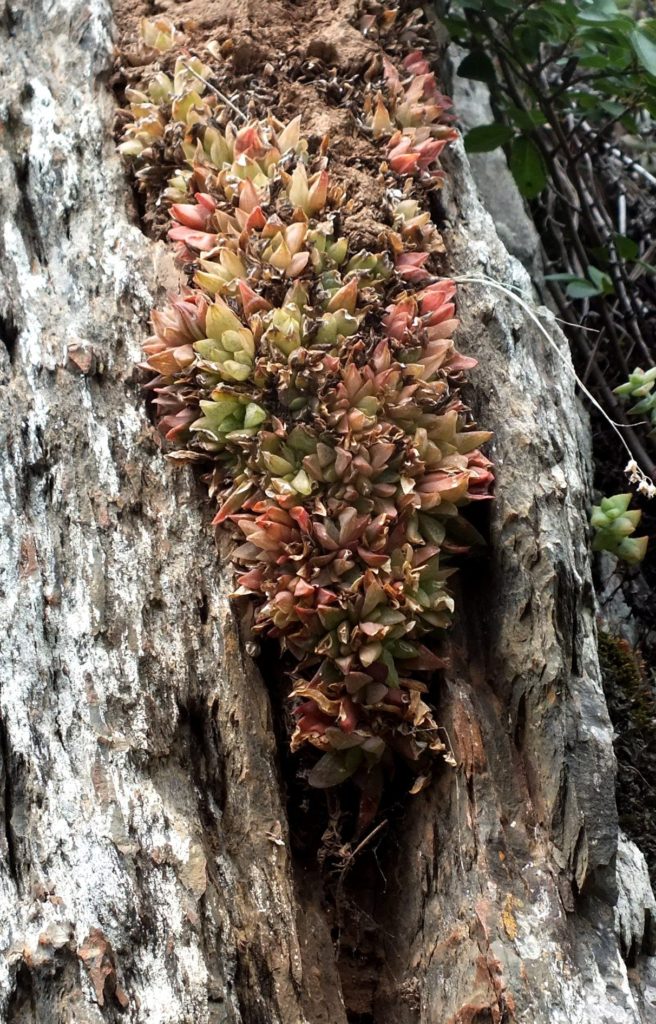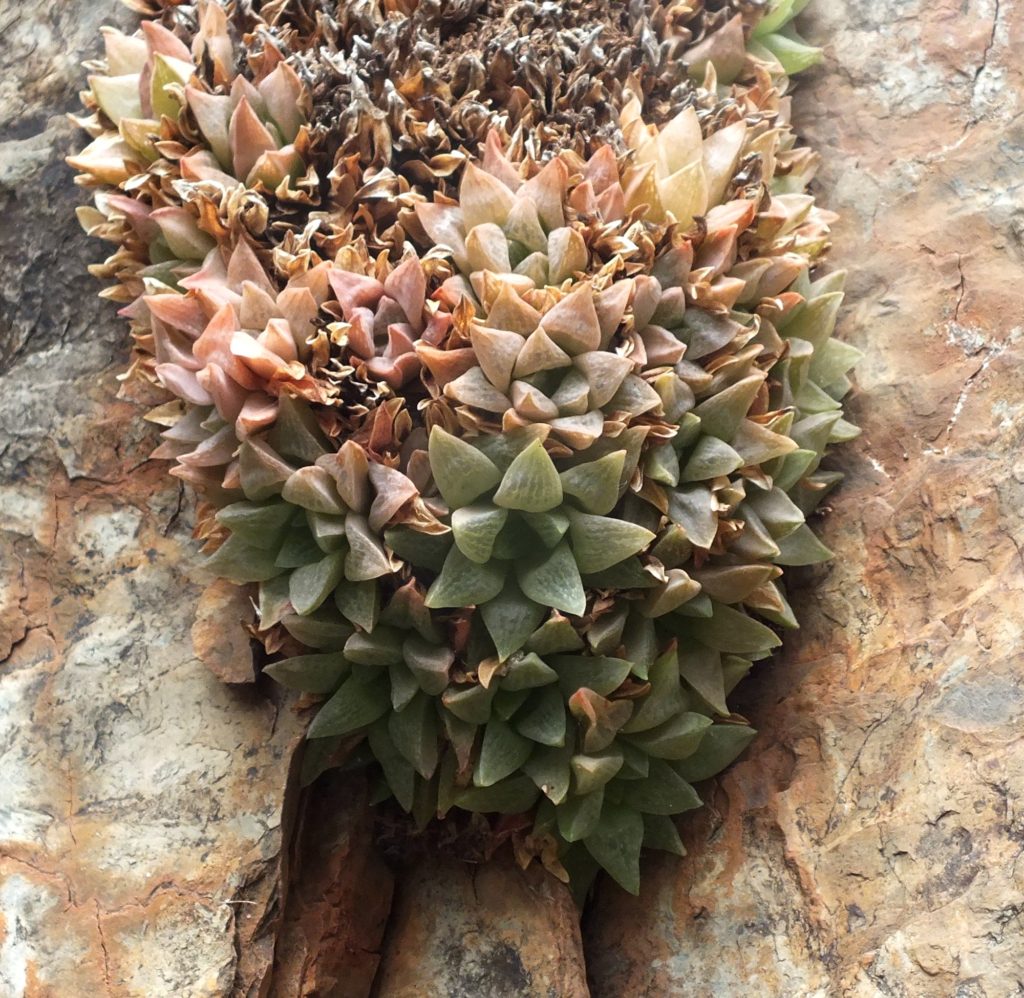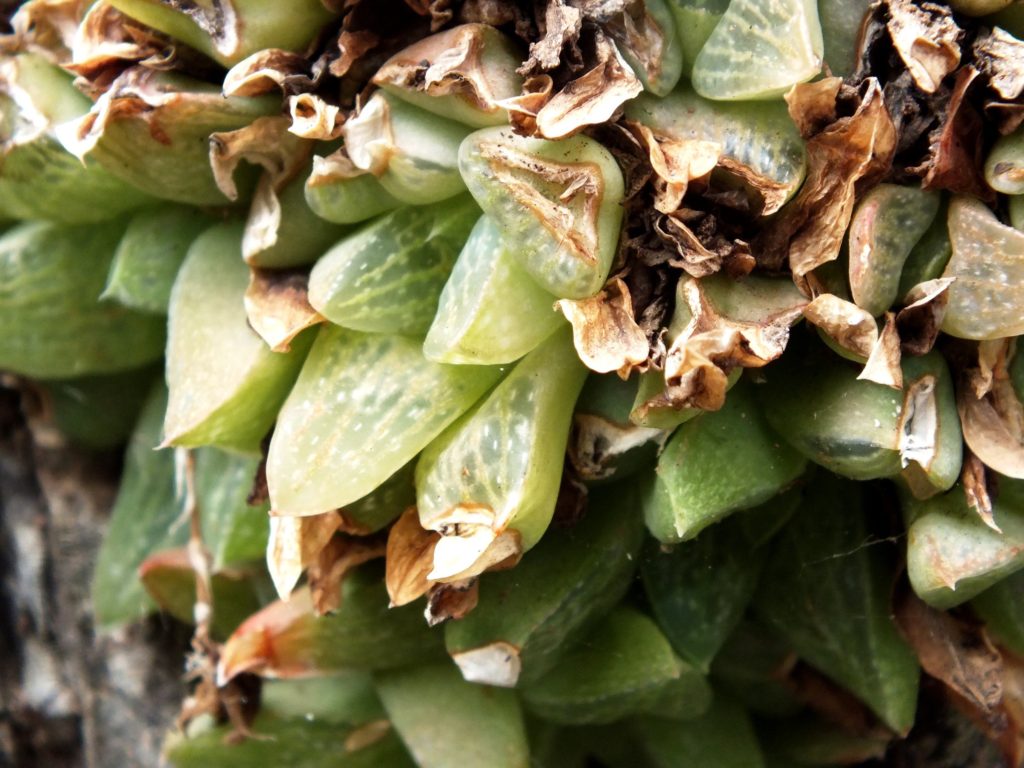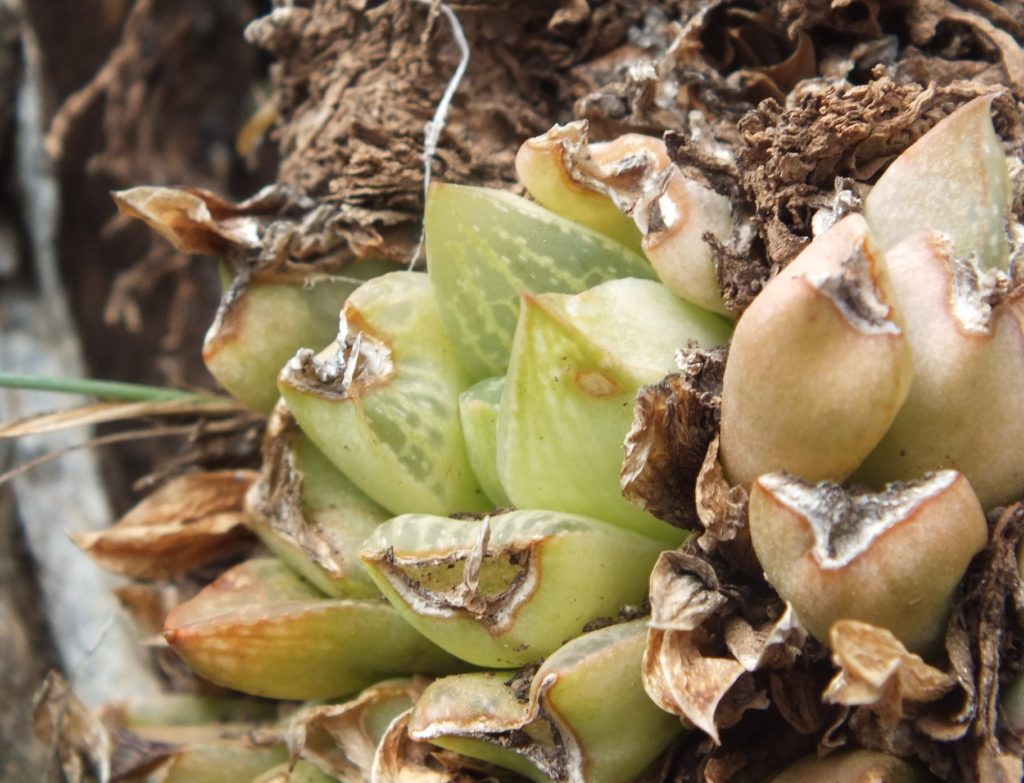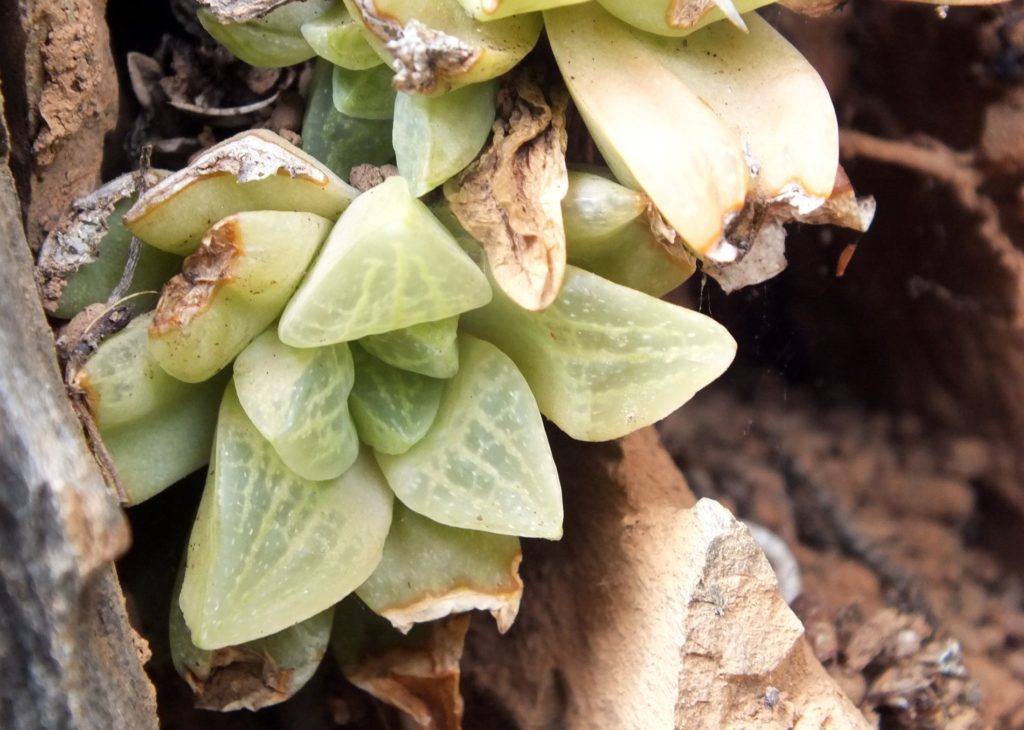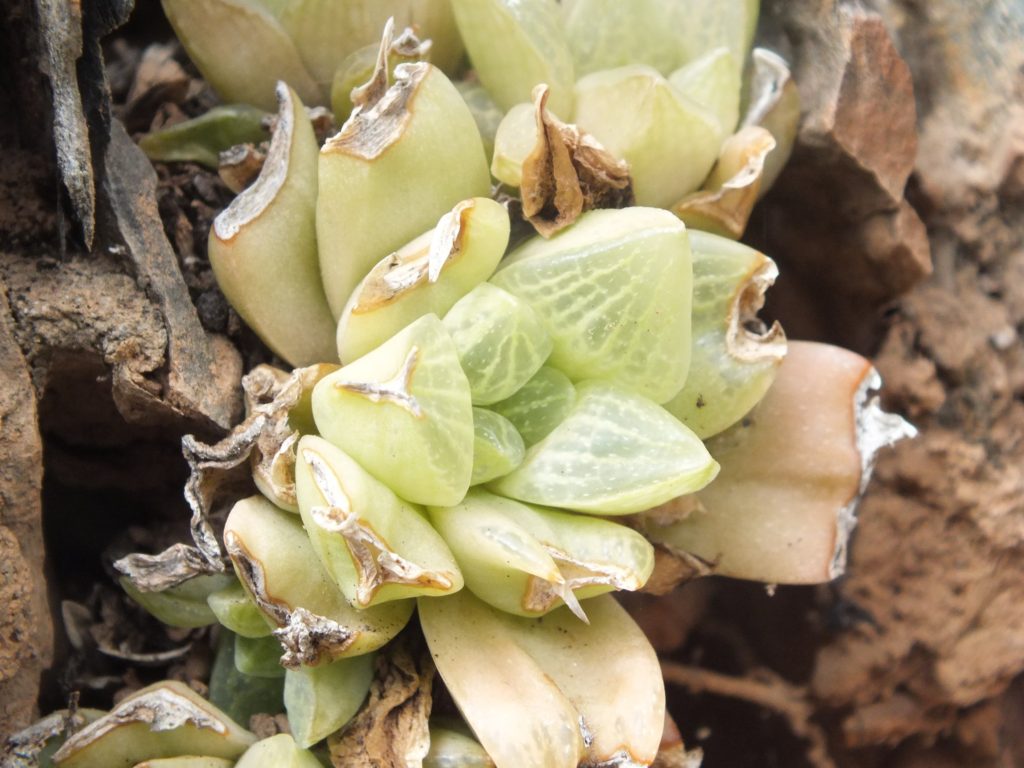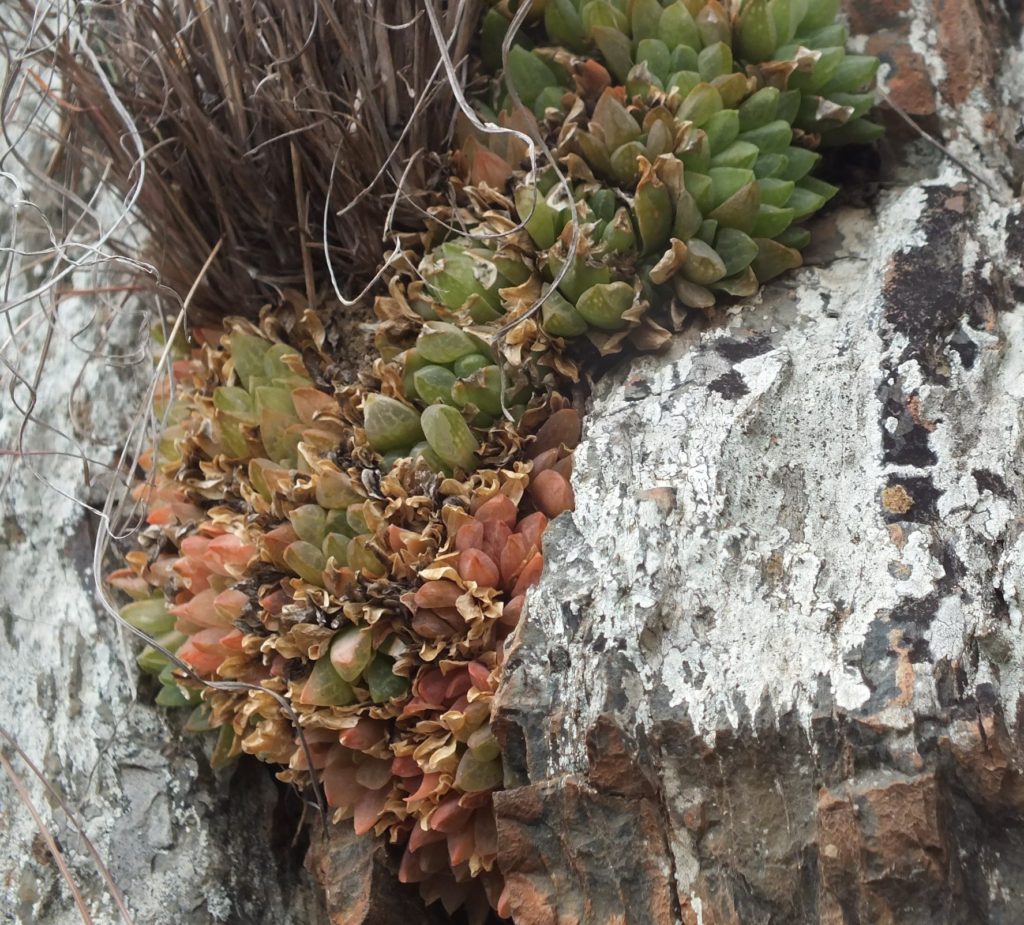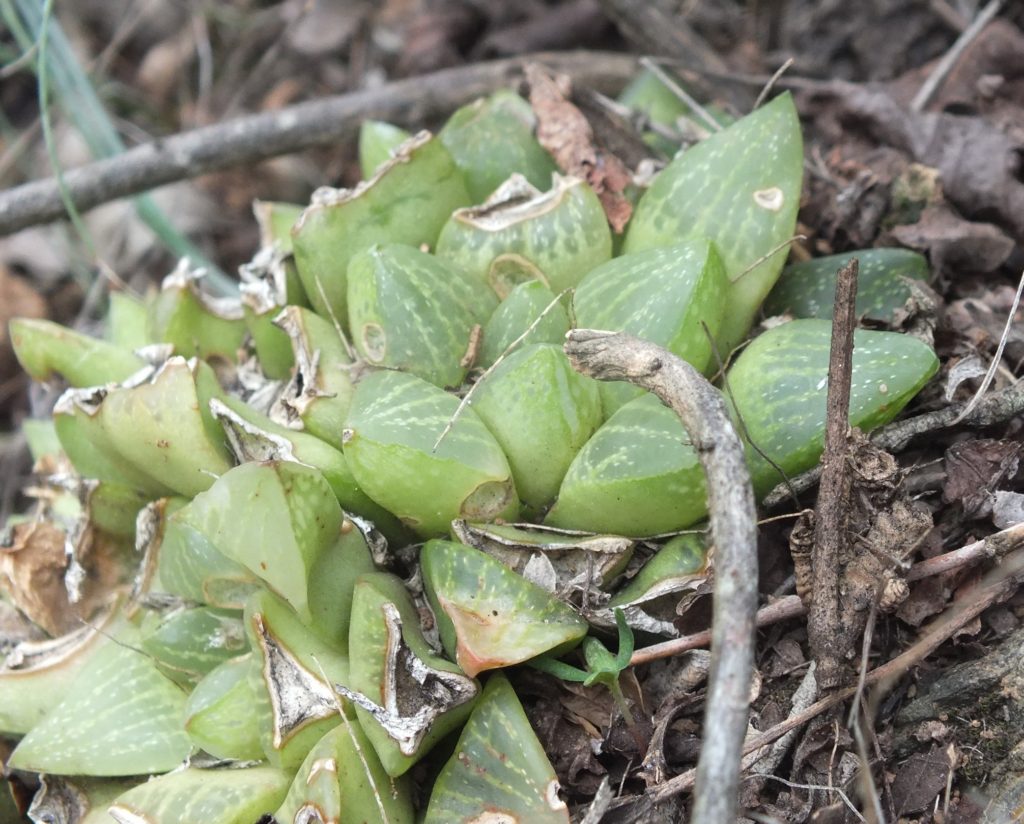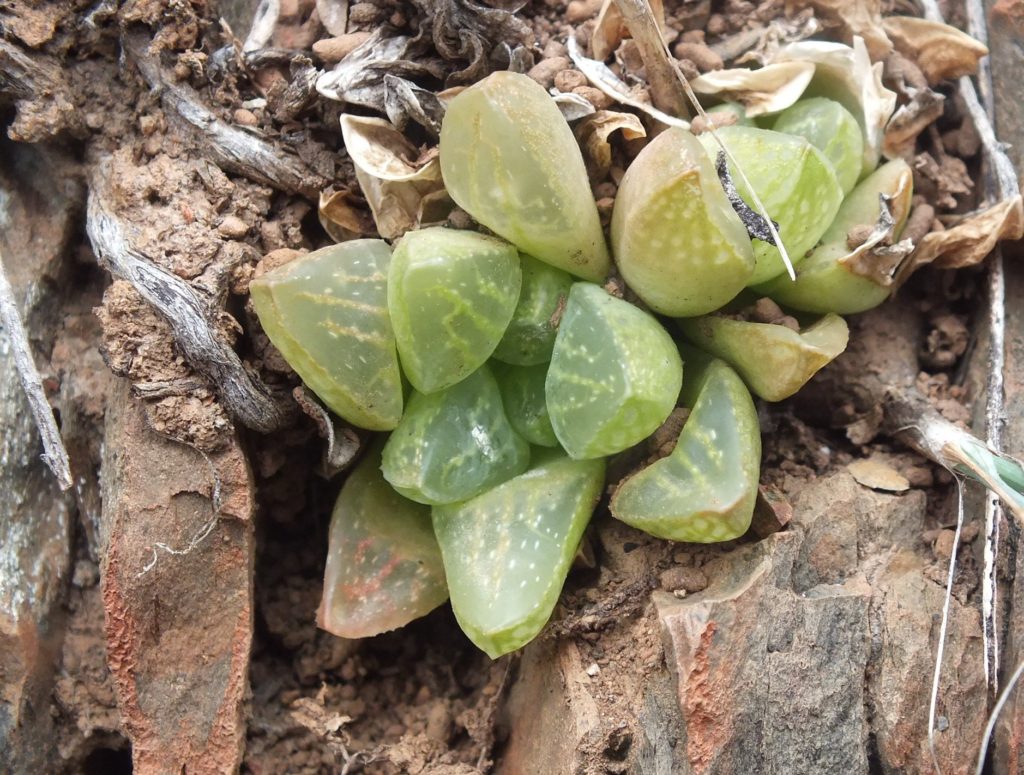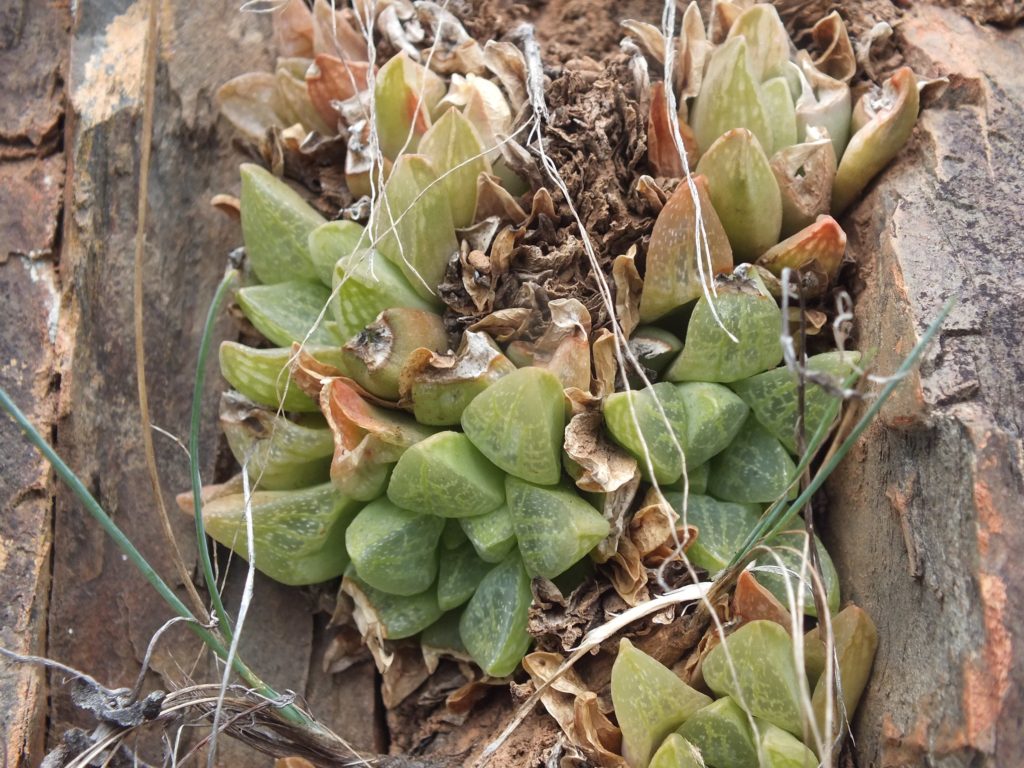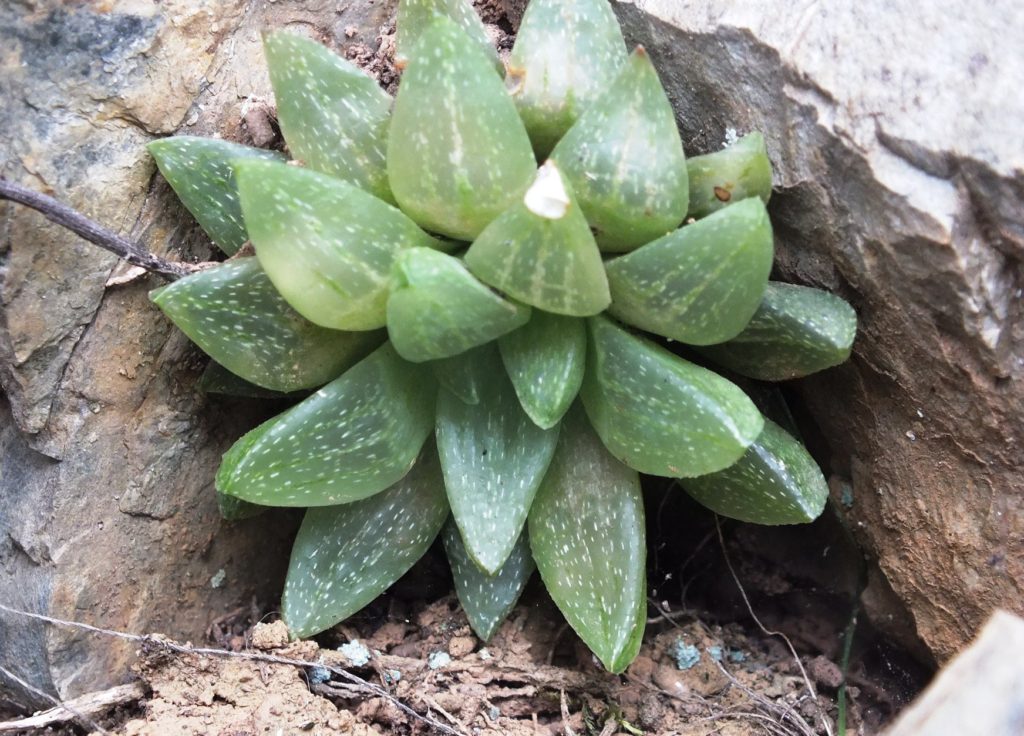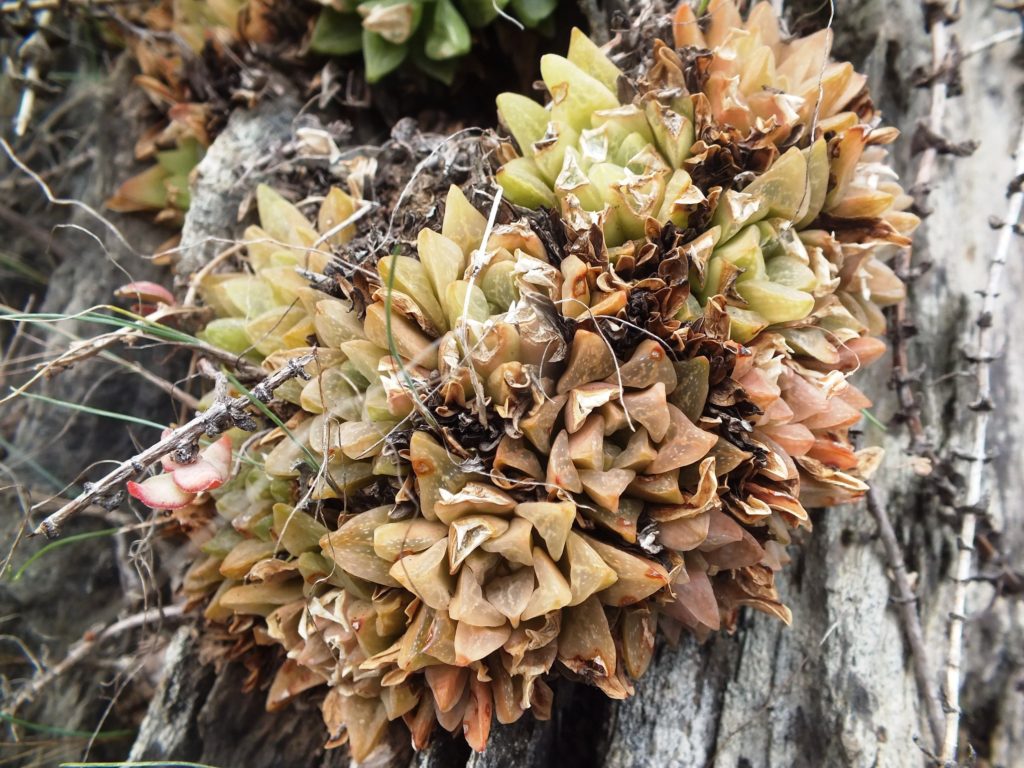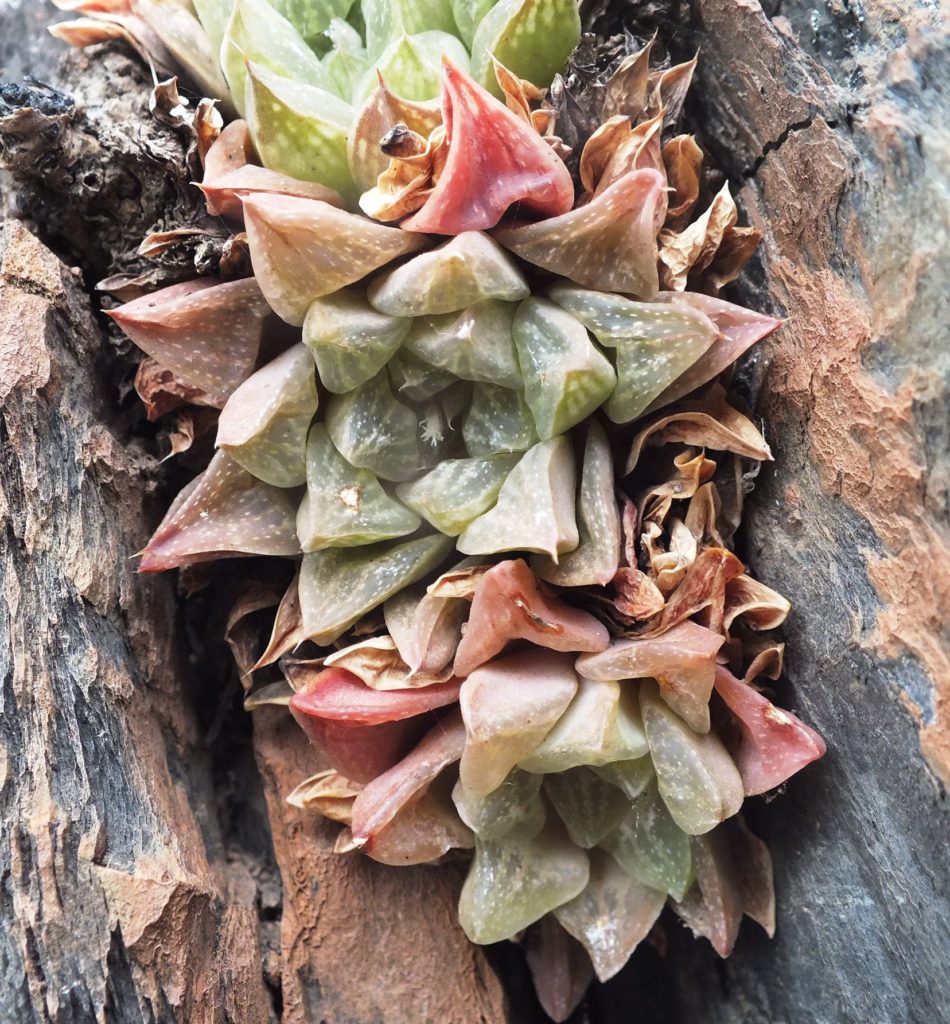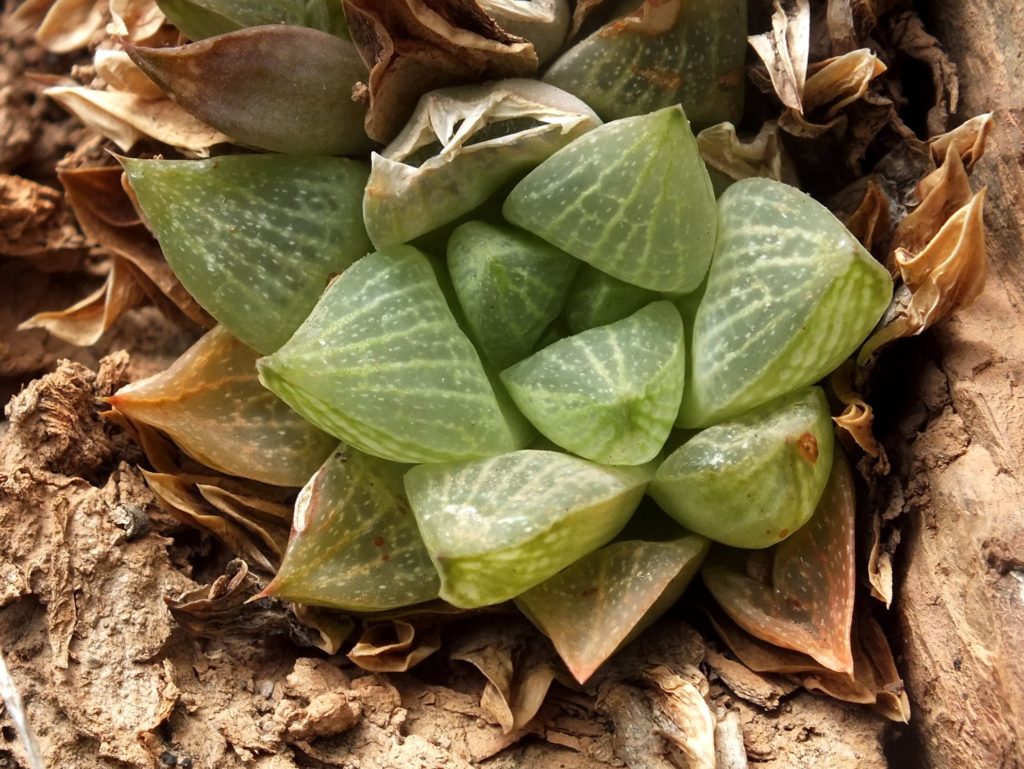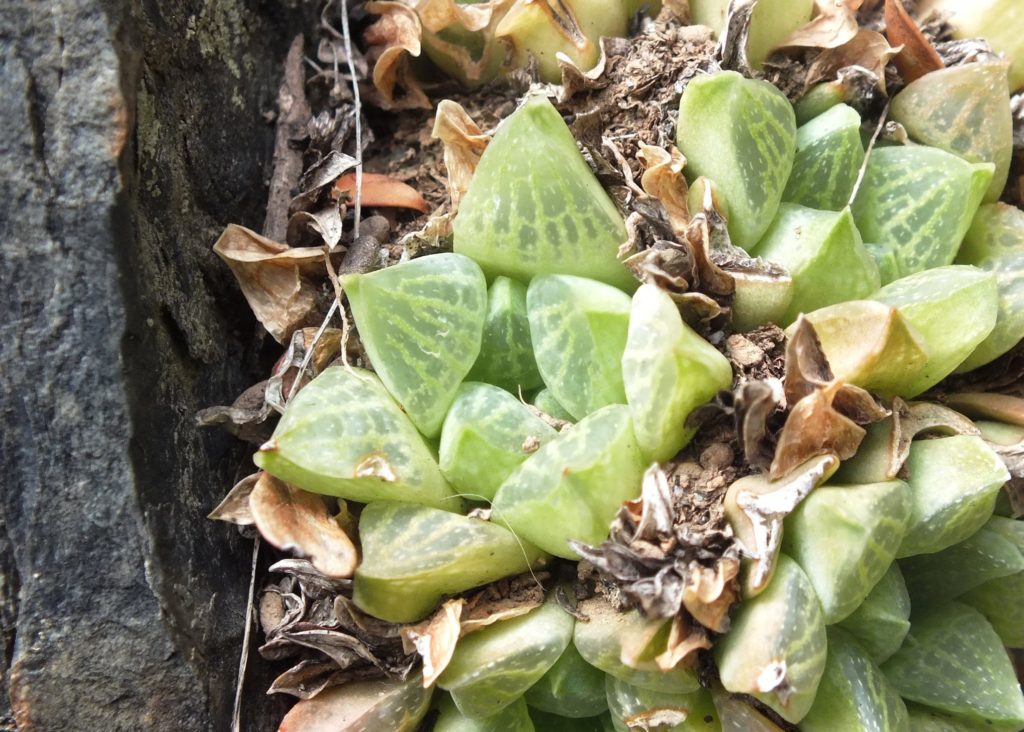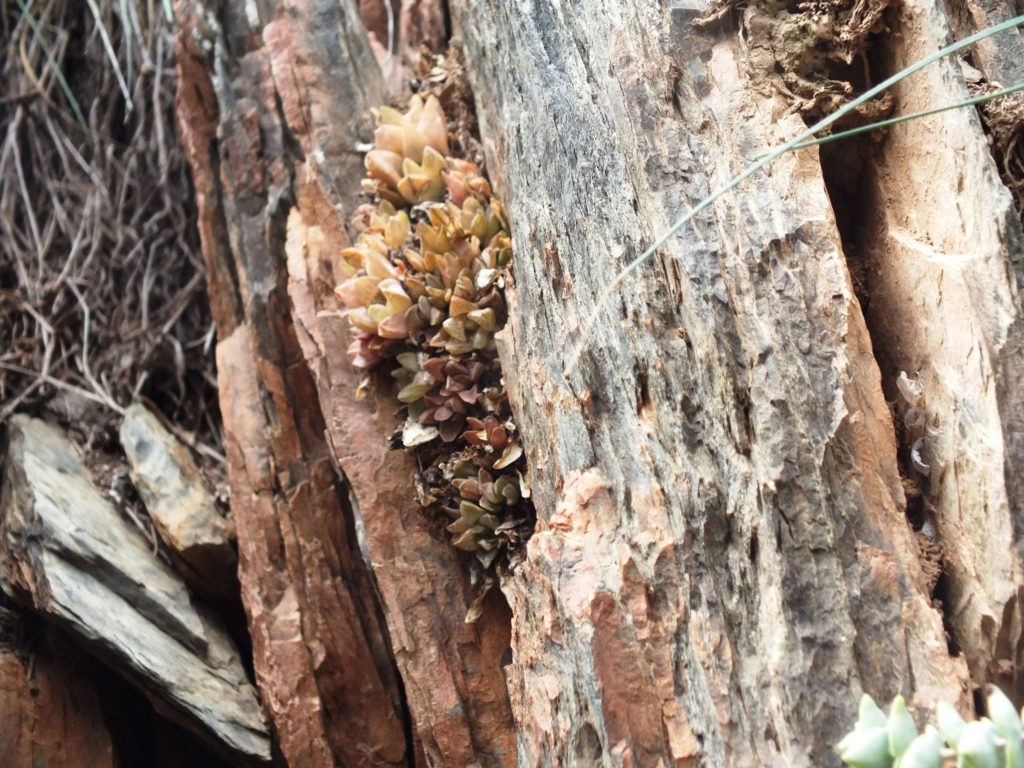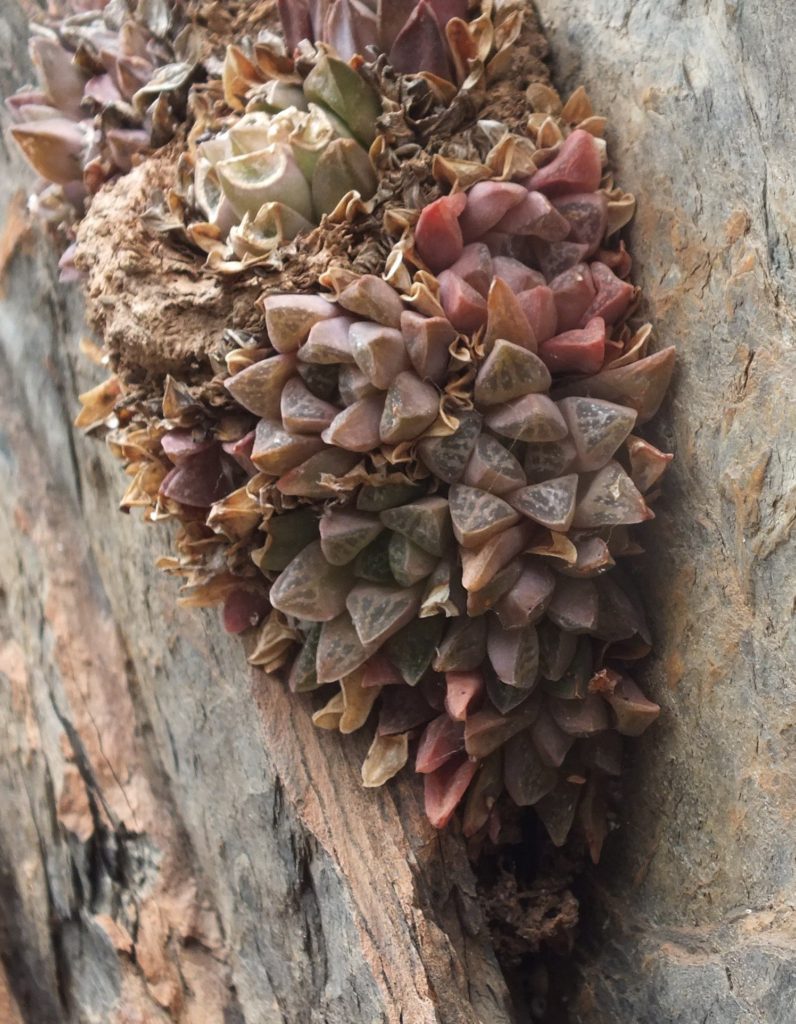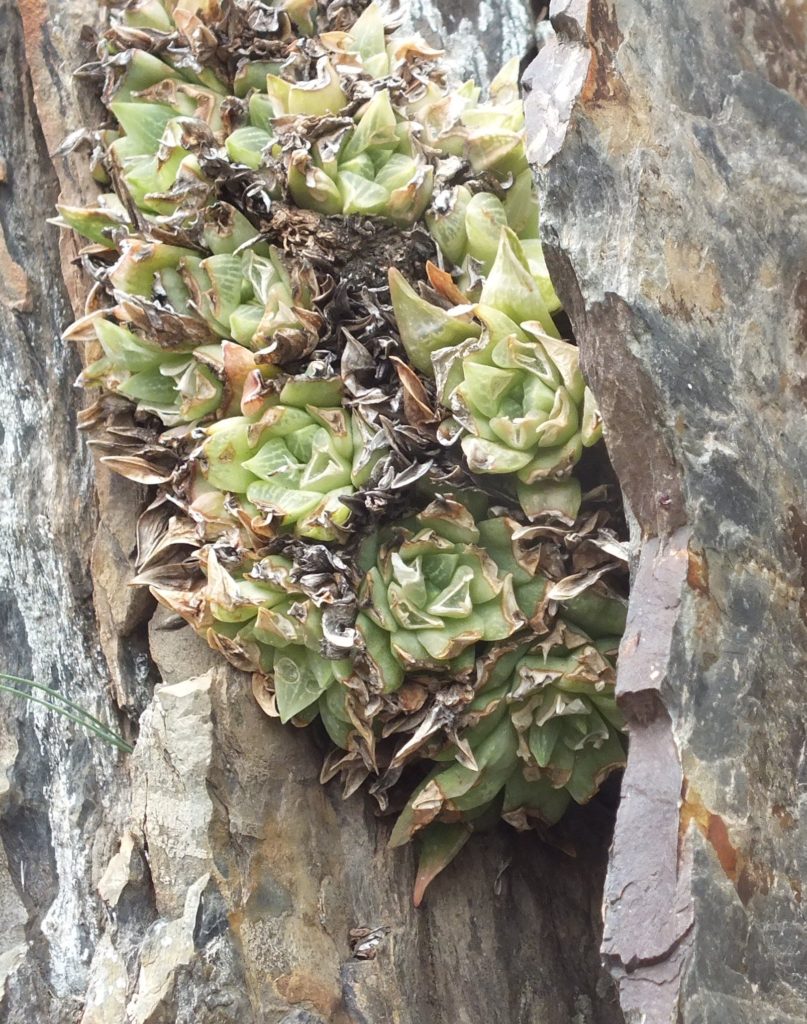106. 2020.03.18 – This is Paulsfontein just west of Albertinia. A small population in an intensively grazed and weed encroached area. A reminder to keep in mind within and between population variation. This has the Latin epithet ‘fusca‘ and I personally fuddle over whether to address it as pygmaea or mirablis. So I suggest H. retusa because these populations simply mirror what I was showing for populations to the west where names like mutica, groenewaldii, badia, joleeniae, bobii, hammeri etc. are collector useful. Conservation is poking me in the ribs but I am not finding the right ambit for that discussion.
A very powerful supporting argument for my thesis of H. retusa as a seemingly massive conglomerate, is the close association with H. floribunda. H. chloracantha, H. parksiana and H. variegata; as well as in the continuities one sees among those ‘species’.
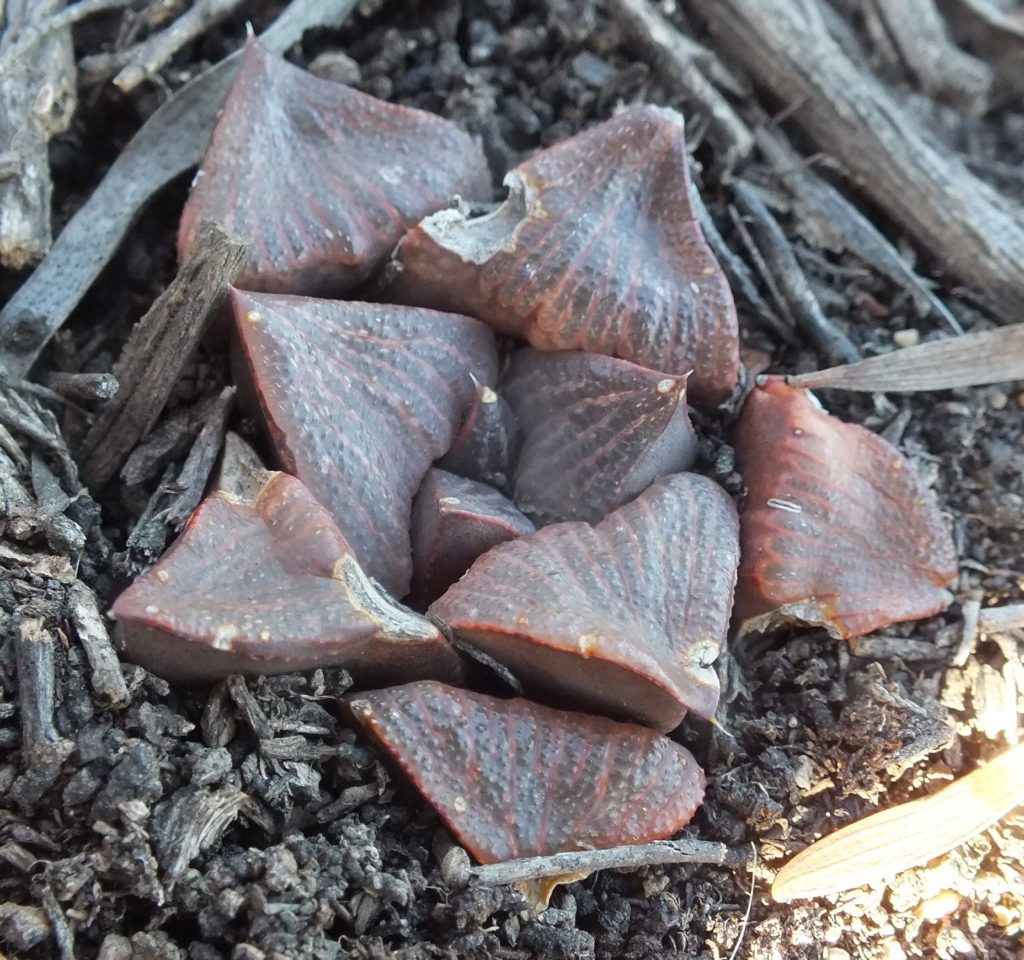
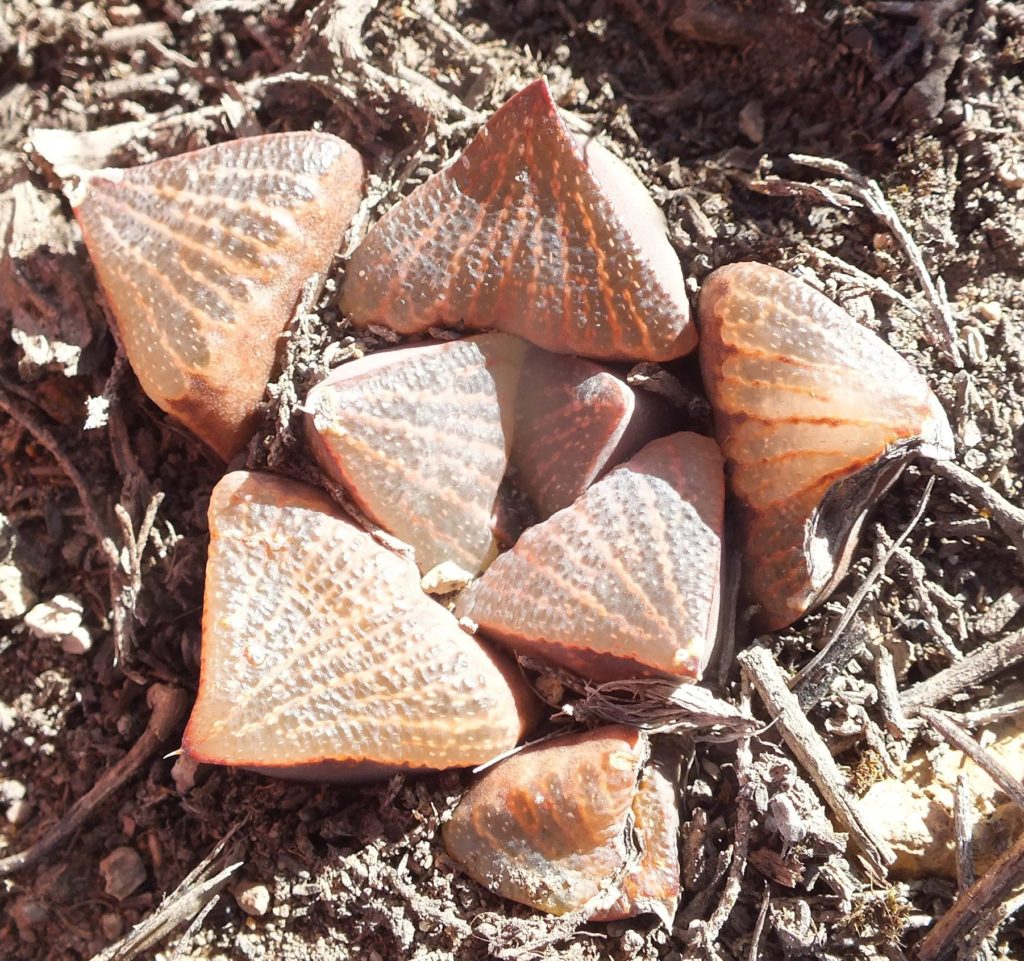
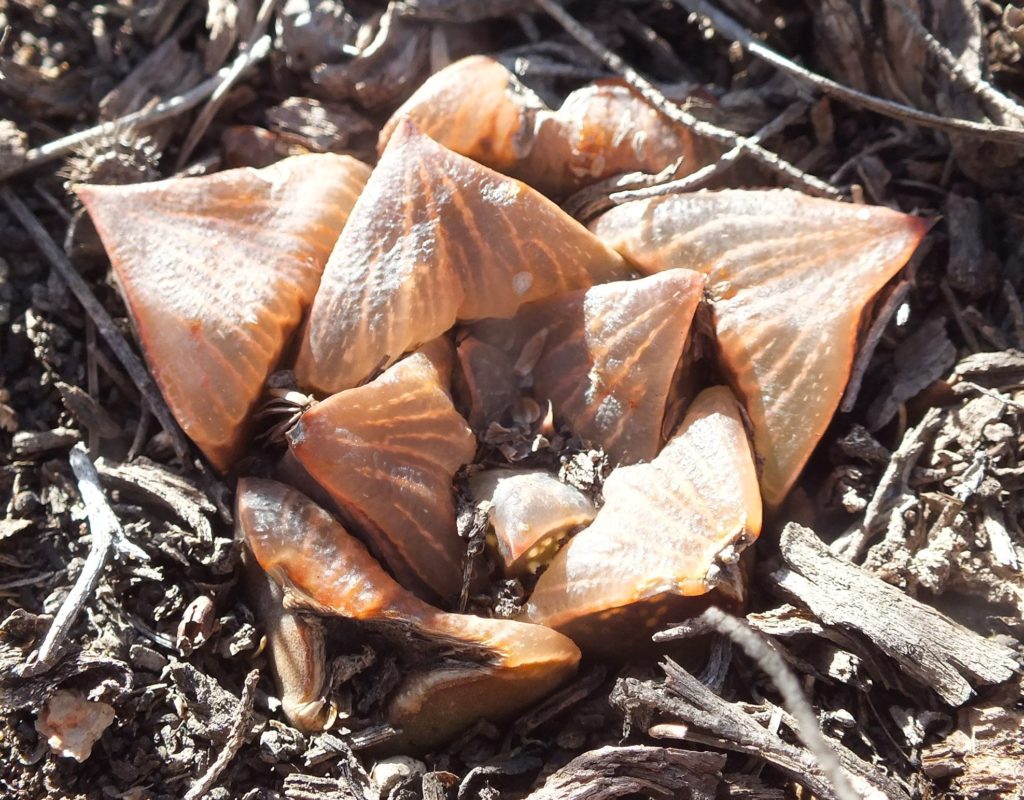

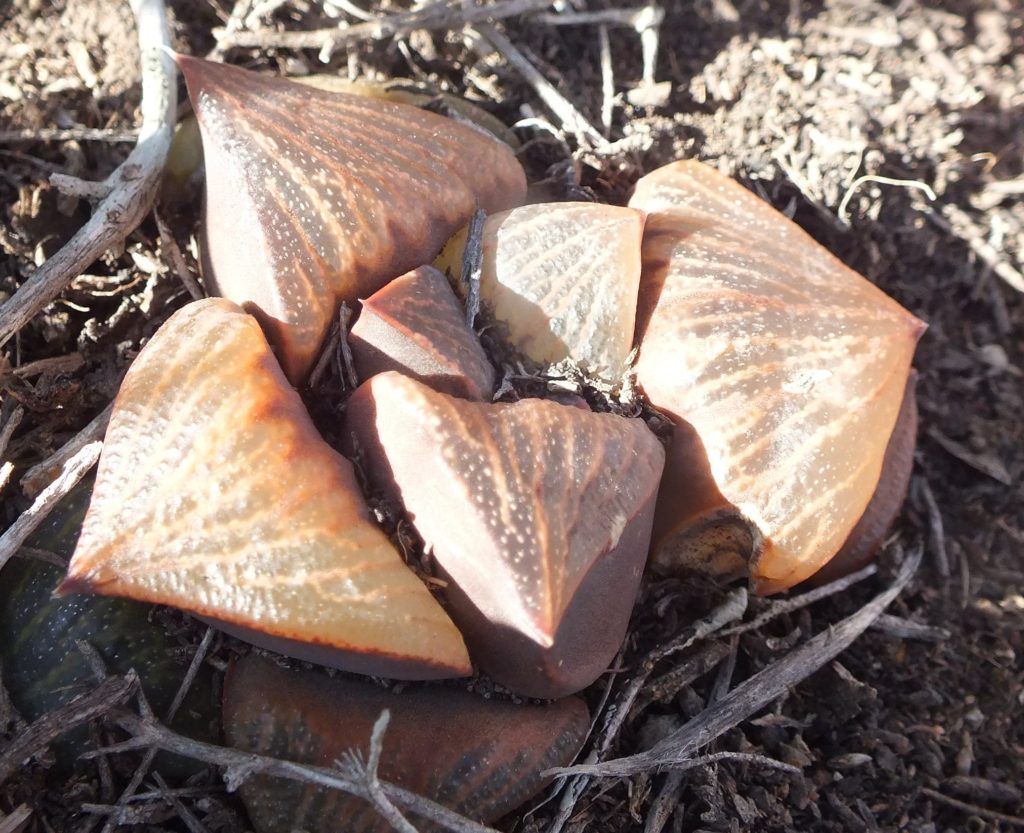
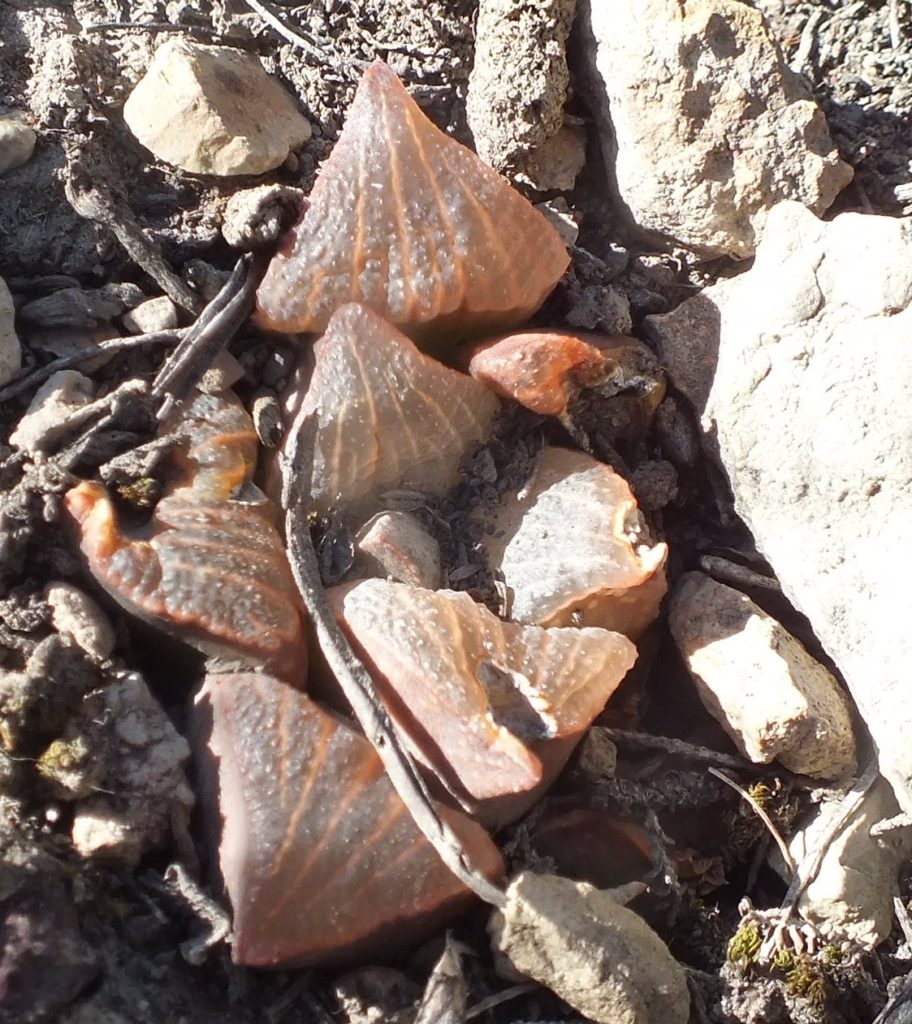
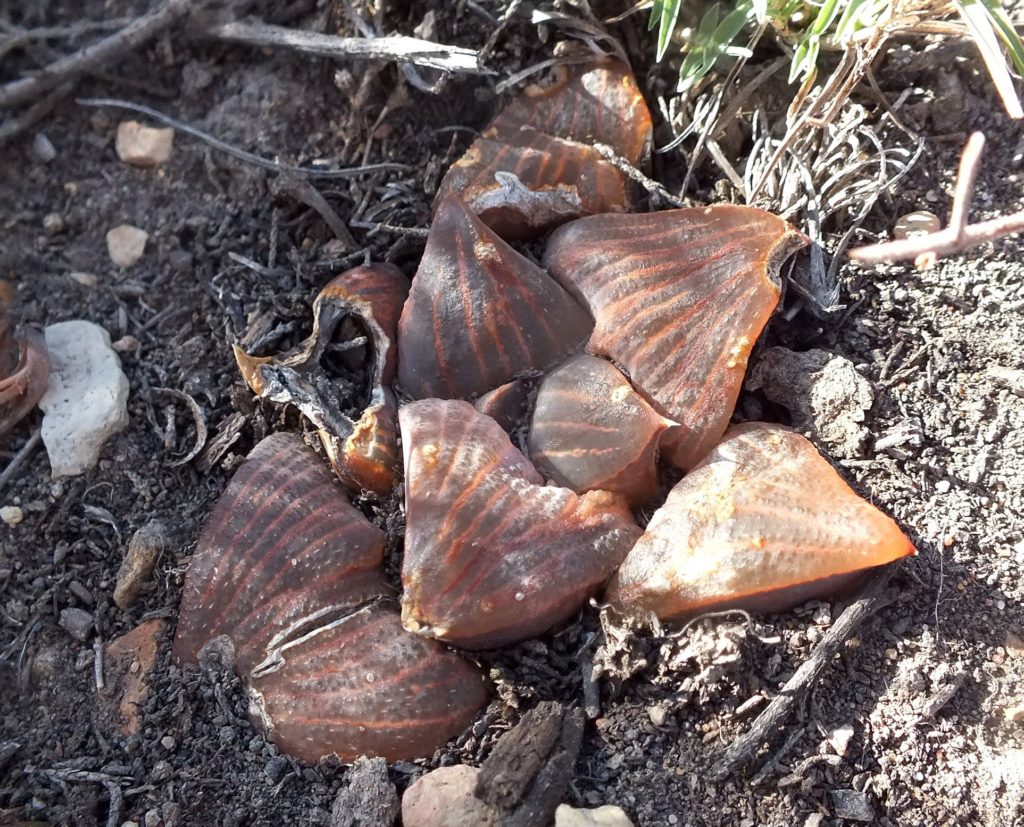
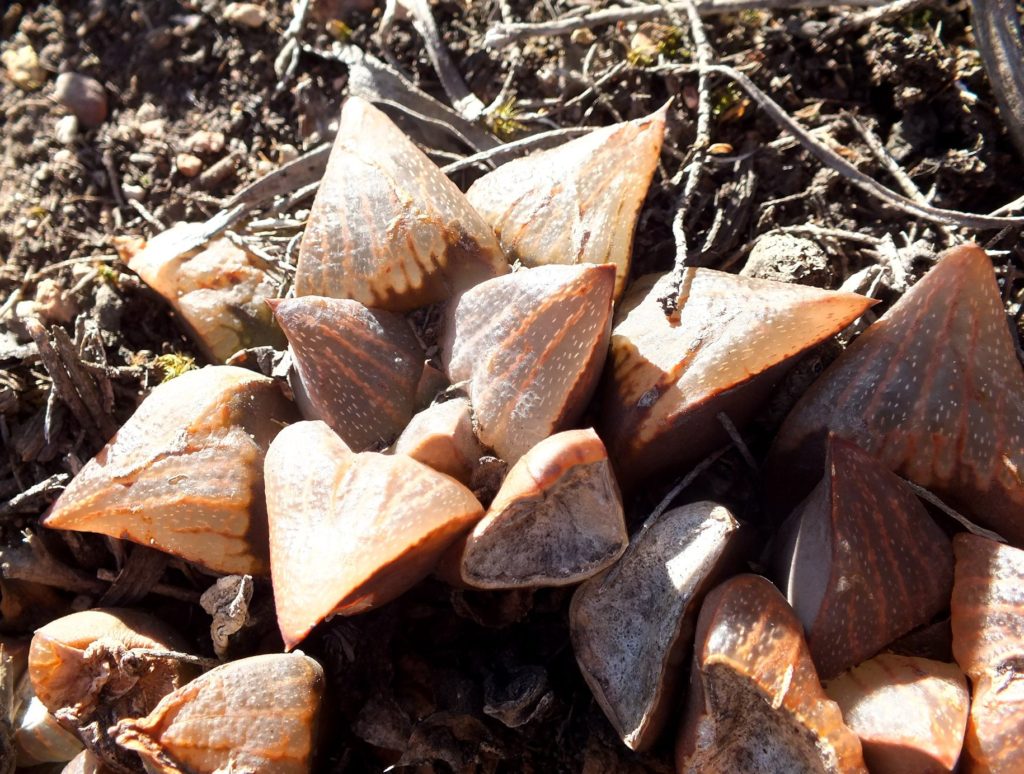
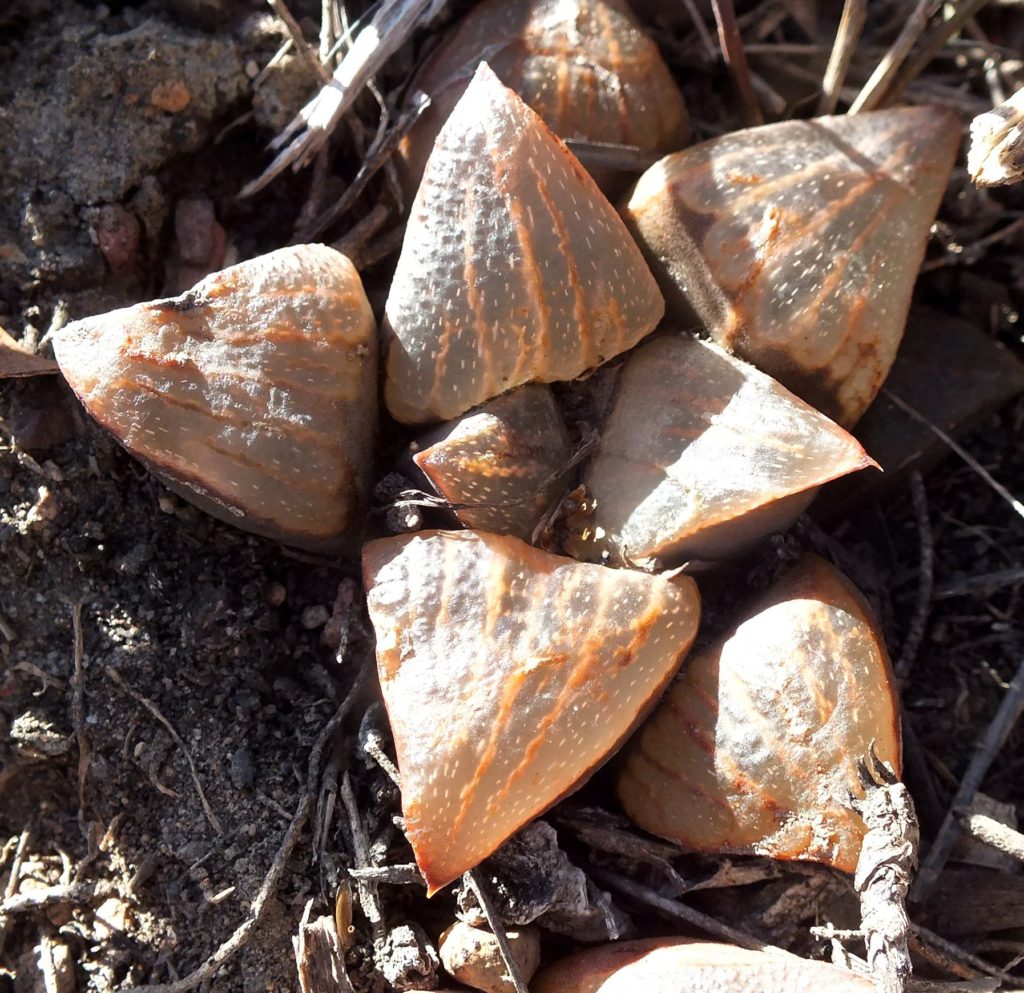
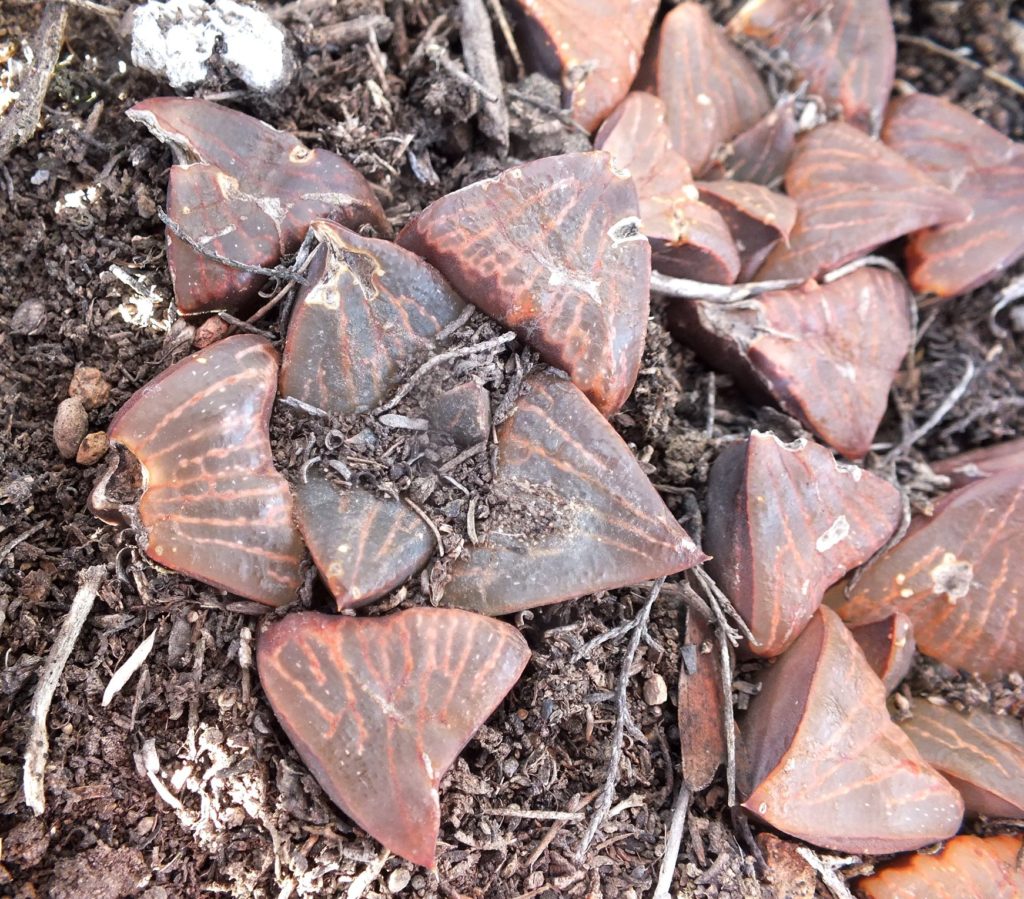

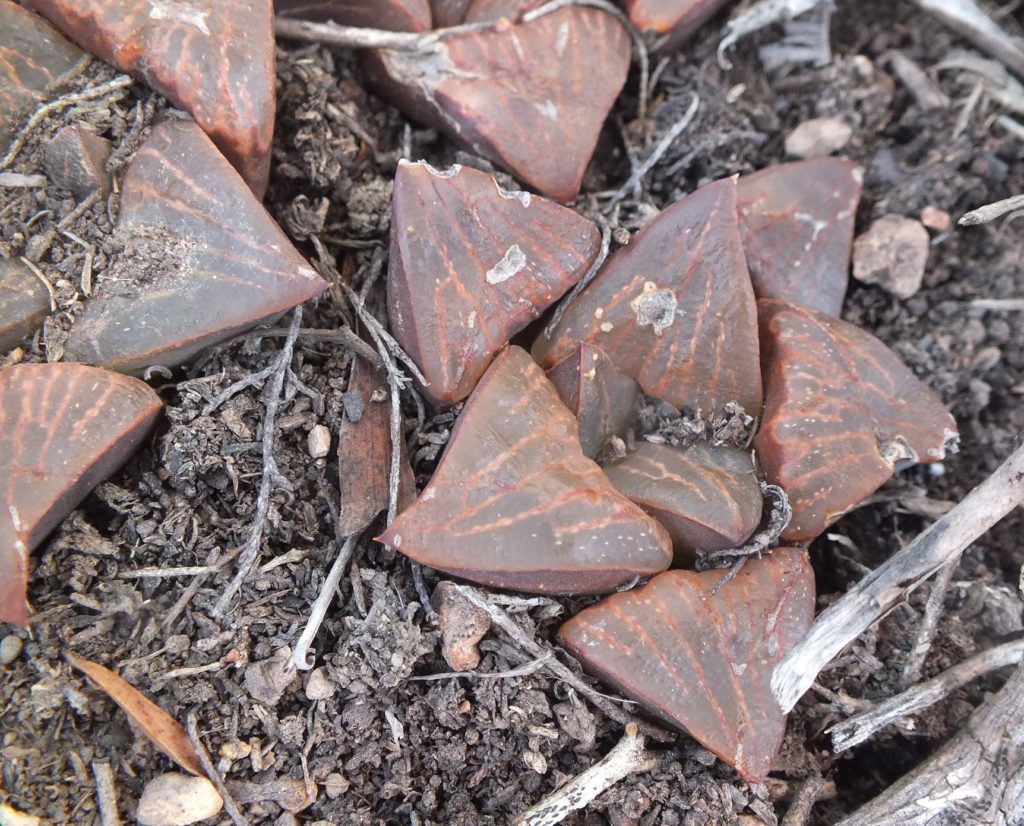
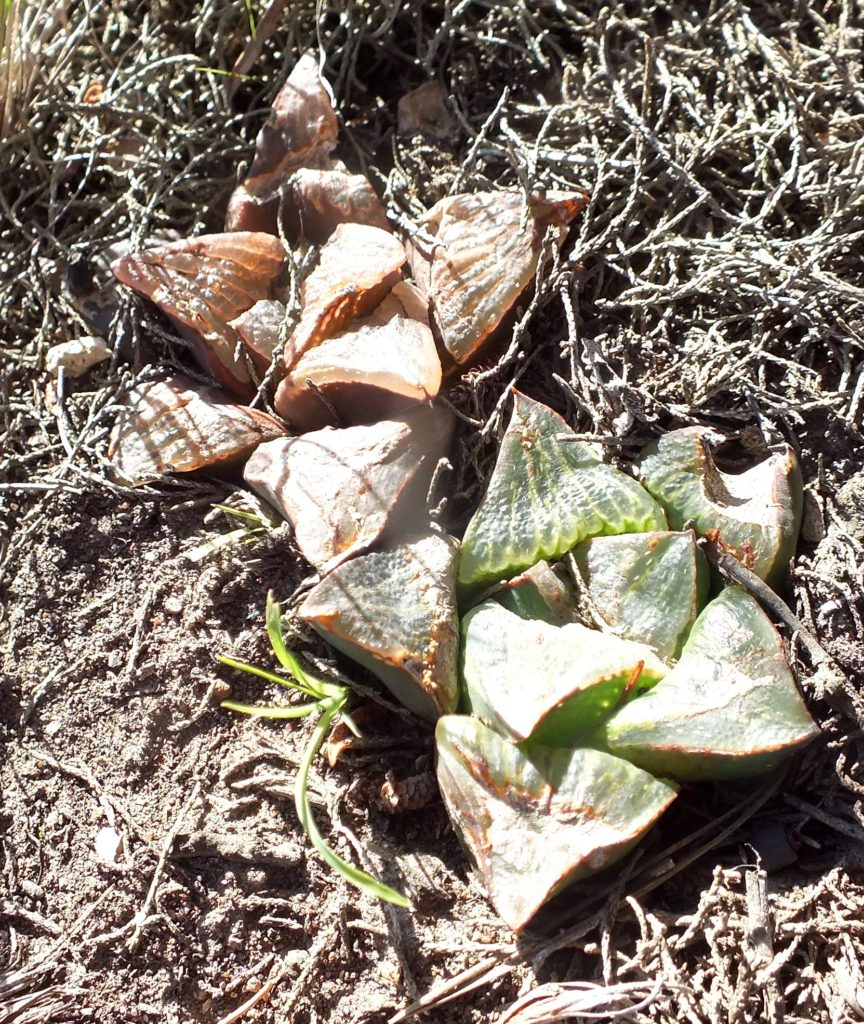
Essie Esterhuizen wrote (31 July 2021) … Populations in that area confuse me. I am not sure whether I deal with the western end of Haworthia pygmaea or eastern end of Haworthia retusa.
Bruce Bayer replied … Delighted to hear Essie’s voice. Essie I do not know what you have followed of mine and I have no idea of where your thoughts have taken you. My conclusions are that we have all got things wrong about botanical classification and that Haworthia is just showing us. So I think species are vast fractal systems. At the least H. retusa (incl. turgida) mirabilis, mutica, pygmaea and emelyae are a single system?
I am so glad Essie has commented because I have just felt so in need of expressing my present feelings about the aloids generally. There was a congress on Aloe classification about 10 years ago that was hailed as a breakthrough for the subject. I saw it as a total farce because the essential nature of species was ignored. My experience and slight knowledge of the DNA methodology applied in the latest solution for the genera (and species), is that it is supremely cringeworthy. All it gets right is the three Haworthioid genera where sequencing was not needed to reach that conclusion. Part of my fears for the worst are based on the fact that two of the major sequencing studies were initiated to explore the phylogeny of just Haworthia species. That the results were written up to totally avoid discussion of the initial hypothesis will never cease to confound me. My confidence in aloid classification is at zeropoint.
107. 2020.03.19 – I wish I had pictures from my visit to this site about 20 years ago. The place? Lodewykstenk east of Albertinia and east of Aasvoelberg – esterhuizenii. There were many plants. This time I really struggled to find only these 3. Why? Certainly not collectors. Drought and severe animal pressure. The plants have the name H. vincentii. But really. Can you name plants in casual fashion like this without a knowledge of what the name is directed at? A basic life form. I consider that it fits comfortably with all these plants I have been dealing with here.
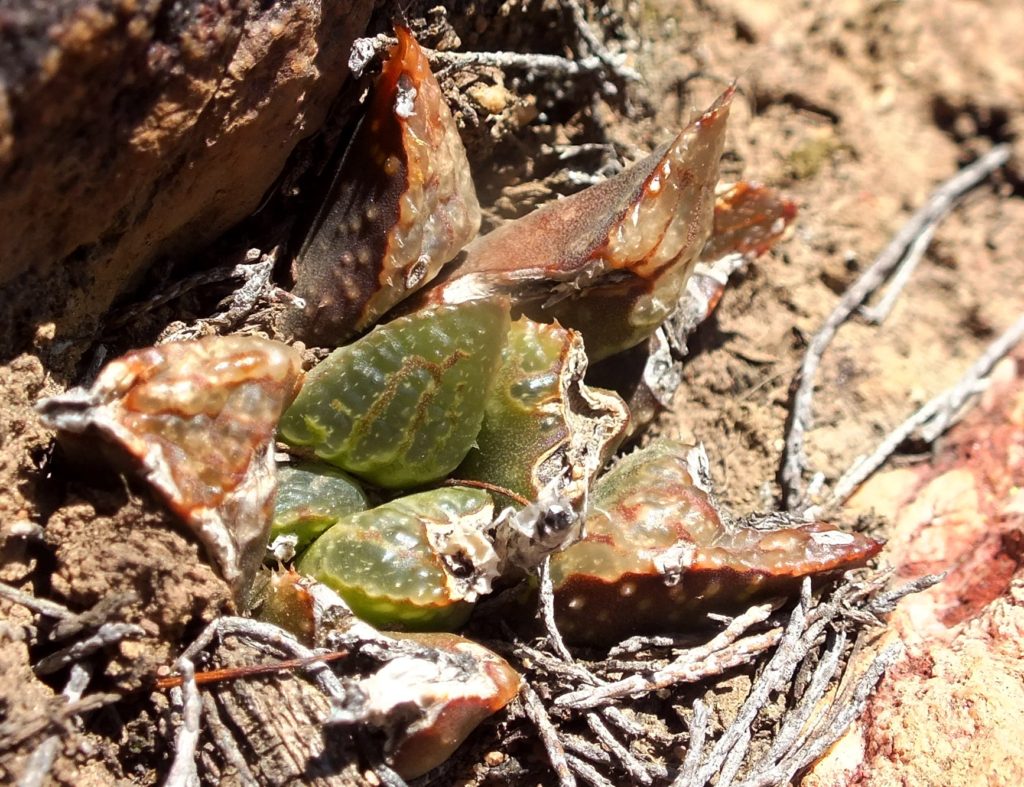
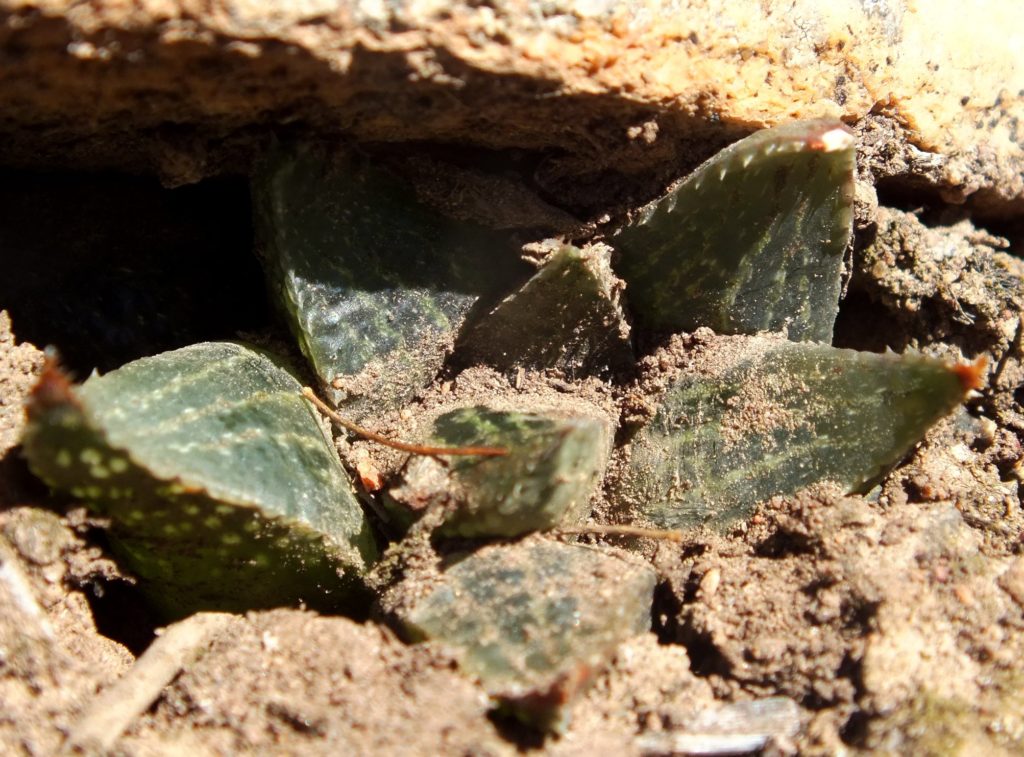

108. 2020.03.19 – Flat or cliff? What the thesis is that these plants belong in a single gene pool and the enormous variability is due to the demands of habitat as much as anything else. Cliff is vertical rock. A level habitat may have the same rock to soil ratio. Whatever the vast range of non-steep rock sites, most significant is that animals (livestock) cannot graze or trample a vertical rock wall? This is then the cliff hanging form of H. retusa east of Tweekuile, north of Albertinia, but a bit off the Valse River. A fortuitous new record to demonstrate just how much exploration is still needed. ♦
